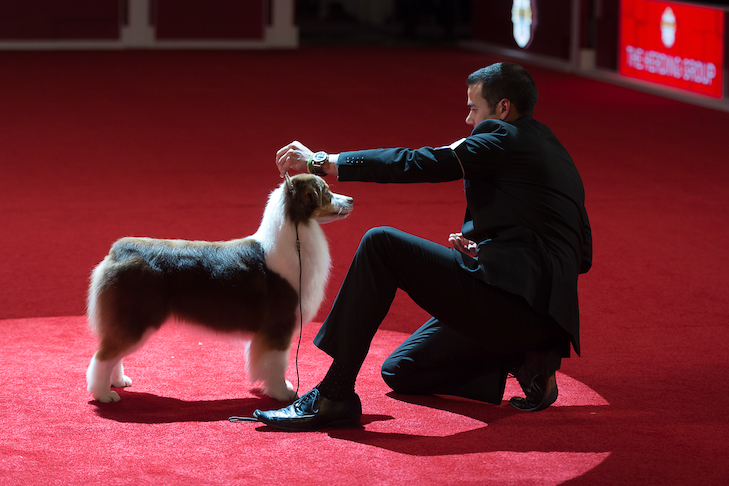If you’ve fallen in love with a Standard Poodle because of its picture-perfect profile or the smooth and easy way an Australian Shepherd glides across the yard, thank their breed standards.
The breed standard is an in-depth, written description of how the ideal dogs in a breed should look, move, and act. These details go beyond saying a dog has a pretty face and will work for food. Standards spell out the breed’s physical characteristics that give it its unique shape, movement, and overall appearance and enable it to perform the job its original developers intended.
When a dog meets all the best traits mentioned in the standard, breed experts say the dog has “type.”
Who Creates a Breed Standard?
The history of breed standards spans hundreds of years, with some standards dating back to the 19th century. These standards were not haphazardly assembled but resulted from years of experience collected by breed developers. This knowledge guarantees that future generations will maintain the breed’s appearance and purpose.
Every AKC breed has a national organization called the parent club. A club’s members discuss, write, vote, and approve the standard before submitting it to the AKC Board of Directors. Once approved, breeders rely on it to make breeding choices, and Conformation judges use it to evaluate dogs in the breed ring.
“When our Danish-Swedish Farmdog (DSF) club was writing our AKC standard and applying for AKC membership, we opted to incorporate the Federation Cynologique Internationale (FCI) DSF breed standard with American terminology,” says Aimee Parramore Kincaid, former president of the Danish-Swedish Farmdog Club of America. “We wanted to follow the European model where our breed is from and continue our good relationship with the European breeders.”
How To Read a Breed Standard
Every breed has a standard that uses as many or as few words as the parent club feels necessary to express the model dog. Some breed standards, like the Greyhound’s poetic one-pager, are short and somewhat subjective, while others, like the Russell Terrier’s three-pager, contain detailed descriptions of the breed’s features. Other breed standards, like the American Foxhound’s, are brief and may include a scale of points.
The highest number of points assigned to a characteristic indicates its priority in the standard. In the Dalmatian standard, out of 100 points, 25 points are used for “color and markings.” The size and distribution of the black or liver-colored spotted coat reflect the Dalmatian’s heritage as a colorful coach dog accompanying horse-drawn rigs driven by nobles and later firefighters.
AKC breed standards generally cover these topics: general appearance, size, proportion and substance, head, neck, shoulders, chest and ribs, back and loins, topline, body, forequarters, hindquarters, feet, coat, color, markings, gait, tail, and temperament. The amount of language used to describe a characteristic tells how important it is to breed type.
Breed standards include “faults” and “disqualifications.” Breed standards may specify “may” or “must” and define a trait as “undesirable,” “a fault,” or “a serious fault.” Breeders weigh these terms carefully when making breeding decisions, but in the show ring, a disqualification is clear. A dog with a disqualification must leave the show ring.
Why Are Breed Standards Important?
While cars, appliances, and clothing styles change yearly, standards keep breeds nearly identical for generations.
When preservation breeders plan breedings, they use the breed standard as a blueprint. The plan ensures the offspring will look like their parents and past generations and perform the breed’s original purpose. The closer a dog comes to its breed standard, the better its chances of producing healthy, purpose-bred puppies to continue the breed for future generations.
When choosing the “best” dogs in the Conformation ring, judges must know the breed’s standard for that breed. They compare the dog to a mental picture they have of the perfect dog of that breed, according to the standard. The judge considers the dog’s physical structure (the head, teeth, structure, and muscle tone), condition (weight and coat condition), gait, and attitude.
“As a breeder and Conformation judge, I evaluate dogs in the show ring against the standard, while keeping in mind whether the dog can perform the original purpose its developers intended,” says longtime Belgian Tervuren breeder Peri Norman Nishikawa, who also judges AKC Herding breeds.
While all herding breeds were bred to move livestock, not all herding breeds are the same. Their breed standards describe unique characteristics that enable the breed to perform specific tasks.
“Historically, German Shepherd Dogs moved large flocks over long distances, and their locomotion was created by traveling long distances in straight lines,” Nishikawa explains.
Small farmers used the Belgian breeds in more restrictive spaces. “Hence, the dogs’ endurance and ability to turn quickly differs from the German Shepherd’s,” Nishikawa says. “That’s why the Belgian Tervuren has a square body with males 24- to 26 inches in height and females 22 to 24 inches in height equal to its length. The German Shepherd Dog is 24 to 26 inches in height and females 22 to 24, but the dog is longer when compared to its height.”
When buying or adopting a purebred dog, the breeder can point out the breed’s unique characteristics and why they’re essential to its activity level. The standard provides clues about what it will be like to live with this breed. It also answers how it will fit into your lifestyle and the type and amount of training it will need.
Can Breed Standards Be Changed?
While some breeds have maintained the same standards for over a century without significant changes, some breed standards might need an update from time to time. These revisions often clarify existing guidelines, add traits, such as a particular color not originally included, or include new disqualifications.
Parent club members take their breed standards seriously. Any revisions usually involve committee meetings, intense discussions weighing the pros and cons, and voting approval before any revisions. After national club members approve the revisions, the AKC Board of Directors accepts them.
While a dog’s eye shape, body length, or curled or uncurled tail may not matter to owners who love their dogs, the breed standard intends to create the ideal breed for all generations.


